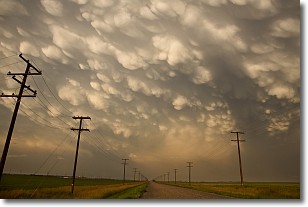Weather Alert in Alabama
Flood Watch issued August 3 at 12:39PM EDT until August 4 at 8:00PM EDT by NWS Tallahassee FL
AREAS AFFECTED: Coffee; Dale; Henry; Geneva; Houston; North Walton; Central Walton; Holmes; Washington; Jackson; Inland Bay; Calhoun; Inland Gulf; Inland Franklin; Gadsden; Leon; Inland Jefferson; Madison; Inland Wakulla; South Walton; Coastal Bay; Coastal Gulf; Coastal Franklin; Coastal Jefferson; Coastal Wakulla; Northern Liberty; Southern Liberty; Quitman; Clay; Randolph; Calhoun; Terrell; Dougherty; Lee; Worth; Turner; Tift; Ben Hill; Irwin; Early; Miller; Baker; Mitchell; Colquitt; Cook; Berrien; Seminole; Decatur; Grady; Thomas; Brooks; Lowndes; Lanier
DESCRIPTION: * WHAT...Flooding caused by excessive rainfall continues to be possible. * WHERE...Portions of southeast Alabama, including the following areas, Coffee, Dale, Geneva, Henry and Houston, Florida, including the following areas, Calhoun, Central Walton, Coastal Bay, Coastal Franklin, Coastal Gulf, Coastal Jefferson, Coastal Wakulla, Gadsden, Holmes, Inland Bay, Inland Franklin, Inland Gulf, Inland Jefferson, Inland Wakulla, Jackson, Leon, Madison, North Walton, Northern Liberty, South Walton, Southern Liberty and Washington, and Georgia, including the following areas, Baker, Ben Hill, Berrien, Brooks, Calhoun, Clay, Colquitt, Cook, Decatur, Dougherty, Early, Grady, Irwin, Lanier, Lee, Lowndes, Miller, Mitchell, Quitman, Randolph, Seminole, Terrell, Thomas, Tift, Turner and Worth. * WHEN...Through Monday evening. * IMPACTS...Excessive runoff may result in flooding of rivers, creeks, streams, and other low-lying and flood-prone locations. Flooding may occur in poor drainage and urban areas. Storm drains and ditches may become clogged with debris. * ADDITIONAL DETAILS... - Heavy rain threat remains likely through Monday afternoon. The heaviest rains should slowly shift north from the Panhandle and into Alabama and Georgia this afternoon and evening. Another round of showers and storms is expected to develop along the coast late tonight and into Monday morning past sunrise. For Monday, the flood threat will slowly shift west and the highest probabilities for localized flooding rain will be across the Panhandle, extreme southwest Georgia, and into Alabama. Additional widespread rainfall this afternoon and into Monday will be around 3 to 4 inches, but localized areas could see 4 to 8 inches in any slow moving storms given likely rainfall rates of 2 to 4 inches per hour. - http://www.weather.gov/safety/flood
INSTRUCTION: You should monitor later forecasts and be alert for possible Flood Warnings. Those living in areas prone to flooding should be prepared to take action should flooding develop.
Want more detail? Get the Complete 7 Day and Night Detailed Forecast!
Current U.S. National Radar--Current
The Current National Weather Radar is shown below with a UTC Time (subtract 5 hours from UTC to get Eastern Time).

National Weather Forecast--Current
The Current National Weather Forecast and National Weather Map are shown below.

National Weather Forecast for Tomorrow
Tomorrow National Weather Forecast and Tomorrow National Weather Map are show below.

North America Water Vapor (Moisture)
This map shows recent moisture content over North America. Bright and colored areas show high moisture (ie, clouds); brown indicates very little moisture present; black indicates no moisture.

Weather Topic: What are Mammatus Clouds?
Home - Education - Cloud Types - Mammatus Clouds
 Next Topic: Nimbostratus Clouds
Next Topic: Nimbostratus Clouds
A mammatus cloud is a cloud with a unique feature which resembles
a web of pouches hanging along the base of the cloud.
In the United States, mammatus clouds tend to form in the warmer months, commonly
in the Midwest and eastern regions.
While they usually form at the bottom of a cumulonimbis cloud, they can also form
under altostratus, altocumulus, stratocumulus, and cirrus clouds. Mammatus clouds
warn that severe weather is close.
Next Topic: Nimbostratus Clouds
Weather Topic: What is Precipitation?
Home - Education - Precipitation - Precipitation
 Next Topic: Rain
Next Topic: Rain
Precipitation can refer to many different forms of water that
may fall from clouds. Precipitation occurs after a cloud has become saturated to
the point where its water particles are more dense than the air below the cloud.
In most cases, precipitation will reach the ground, but it is not uncommon for
precipitation to evaporate before it reaches the earth's surface.
When precipitation evaporates before it contacts the ground it is called Virga.
Graupel, hail, sleet, rain, drizzle, and snow are forms of precipitation, but fog
and mist are not considered precipitation because the water vapor which
constitutes them isn't dense enough to fall to the ground.
Next Topic: Rain
Current conditions powered by WeatherAPI.com




